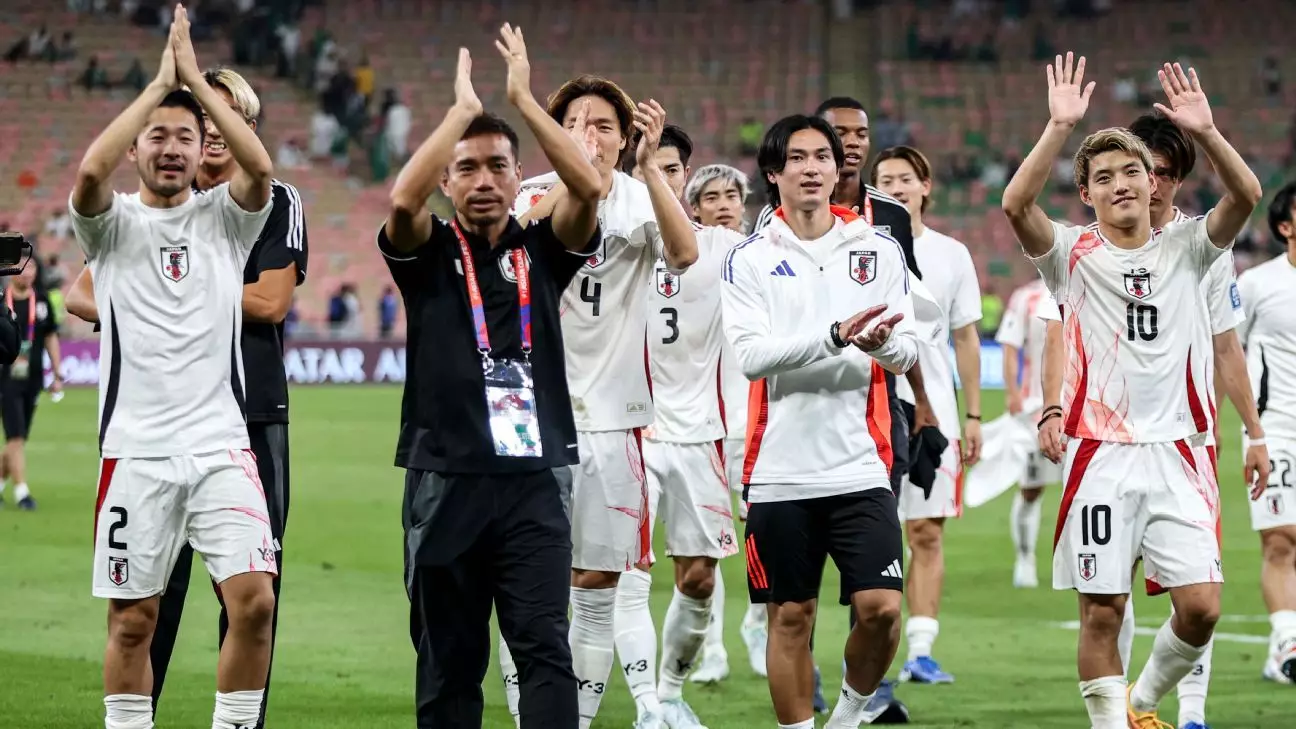In an era where the turnover of national team coaches is alarmingly high, the stability shown by Japan’s Hajime Moriyasu is remarkable. With the footballing world constantly shifting, only a few coaches manage to endure the global pressures across multiple FIFA World Cup cycles. As of late 2023, of the 32 coaches who led their teams during the recent World Cup in Qatar, just seven remain in their posts. This figure emphasizes the inherently volatile nature of international football coaching, where performance and immediate results often dictate the fate of long-term strategies.
Moriyasu’s appointment in 2018, following Akira Nishino’s tenure that ended with a round of 16 exit in Russia, marked the beginning of a significant era for the Samurai Blue. His leadership has not always been seamless; indeed, reports indicated that he faced potential dismissal during the qualification phase for the 2022 World Cup. However, his ability to steer Japan to a crucial victory against Australia ultimately secured their spot and demonstrated Moriyasu’s strategic acumen and resilience under pressure.
As Japan gears up for yet another World Cup qualifier, the team’s form is exceptional. The Samurai Blue have perfected their approach in the Asian qualifiers, evoking a sense of dominance that few can match. Analyzing their journey through both the second and third qualification phases reveals a stellar record: 21 goals scored and none conceded during the second phase, coupled with 14 goals in the third phase and three clean sheets. This level of performance underscores Japan’s transformation into a formidable footballing power in Asia.
The team’s winning streak extends well beyond the qualifiers. Remarkably, Japan has triumphed in 20 of its last 22 competitive outings, including memorable victories over strong opponents like Germany and Turkey. This resurgence is not accidental; it reflects a deeper commitment to nurturing talent within the nation’s grassroots, coupled with a newfound prominence by players in Europe’s top leagues. Today, a significant core of Japanese players is not only competing at high levels but also making impactful contributions to their clubs.
To understand the evolution of Japan’s footballing prowess, one must recognize the emergence of the so-called “Tokyo Olympics Generation.” Younger players, having gained invaluable experience participating in the Tokyo Olympics, are gradually taking the mantle from veteran stalwarts, such as Maya Yoshida and Yuto Nagatomo. This restructuring allows for scalability in both performance and strategy, providing Japan with a fresh outlook and the ability to blend experience with youthful vigor.
The depth of talent is evident, with players like Daichi Kamada, Takumi Minamino, and Wataru Endo leading the charge. Furthermore, the potential returns of top defenders Takehiro Tomiyasu and Hiroki Ito will only bolster the squad’s strength as they prepare to face rivals from across Asia.
Japan’s ambitions extend beyond merely achieving victory on the field. The Japan Football Association (JFA) has outlined a comprehensive vision called “Japan’s Way,” which aims for the national team to cultivate a football culture that is inclusive, community-focused, and strategically progressive. This philosophy encompasses nurturing millions of football families while setting a long-term objective: winning the FIFA World Cup by 2050.
This document outlines the critical importance of enriching Japan’s football ecosystem. While technical and tactical training remains a focus, equal emphasis is placed on creating an environment that encourages participation at all levels—from grassroots to elite competition. The aspiration is not just for success on the pitch but to ensure football remains ingrained in the cultural fabric of Japan, fostering joy and unity among players, fans, organizers, and support networks.
Furthermore, “Japan’s Way” seeks to define the country’s unique approach, encouraging the nation to draw upon its strengths rather than mimicking successful models from other countries. This ethos is necessary as Japan navigates the complexities of an increasingly competitive international football landscape.
Looking ahead, Japan faces significant tests that could further shape its footballing trajectory. As they prepare for their match against the Socceroos in Saitama, the stakes are high. Historically, the rivalry with Australia has been intense, underscored by mutual respect yet marked by Japan’s dominance on home soil. The Socceroos are navigating their own set of challenges, including a coaching change that may alter their fortunes.
While many expect Japan to come out on top, the unpredictable nature of knockout football means there are no guarantees. Australia has shown the capacity to elevate their game against well-ranked opponents, making the prospect of an upset tantalizingly possible.
Moriyasu’s continued leadership of Japan’s national team offers a promising outlook for the Samurai Blue. The blend of young talent, strategic foresight, and a commitment to evolving Japan’s football identity aligns to propel the team toward future success on both regional and global stages. As they seek to overcome challenges and solidify their legacy, one thing remains clear: Japan’s football journey is as much about resilience and strategy as it is about the thrill of the game itself.

